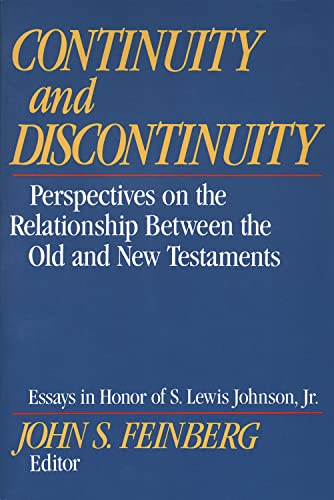The Search for the Christian Doctrine of God: The Arian Controversy 318–381 AD
Written by R. P. C. Hanson Reviewed By Graham KeithThe Arian Controversy has not been well served in recent years in English. Until now English readers have had to go back to the much slighter work of H. M. Gwatkin (1889) for a comprehensive treatment of the whole controversy. By its very size Professor Hanson’s book will establish itself as the standard work for many years ahead; for it combines doctrinal development with a detailed account of the complex church politics of the period. Systematic coverage of most figures (major and minor) who appear in the dispute along with the literature they produced will also enable this work to be used for reference purposes.
Hanson presents his book as a compendium of the results of scholarship up to the International Patristic Conference of 1987. And this is a fair assessment. Hanson pinpoints those questions scholars have been asking and sets out the different solutions, but not at the expense of shrinking from his own judgments.
That is not to say the book lacks originality. Far from it! Hanson’s most significant contributions lie in his attempt to elucidate a distinctive Arian soteriology and in his delineation of Homoean Arianism. The first of these is the issue of the moment in scholarship in this field. Can we retain the traditional view of Arianism as a distinctly cosmological controversy or is this simply the façade which hides a deeper soteriological concern? Hanson plumps emphatically for the latter, and in the process accredits the Arians with more appreciation of the sufferings of Christ than their Nicene opponents. In particular, the Arians affirmed that only the genuine sufferings of God, albeit a lesser sort of God, could save us. Hanson approves this assertion of divine passibility. But is it a fair summary of the Arian position? There are difficulties in the evidence. There is the almost total silence of Arius himself on this point. Then there is the tendency within evolving Arianism to exhibit some of those very docetic features with regard to Christ’s suffering which are all too apparent in Nicene authors. Besides, as Hanson readily agrees, the Arians were undoubtedly concerned to protect the Supreme Being from all suffering by postulating in Christ a distinct and lesser divinity. Perhaps the most serious objection, however, to the soteriological theory is the lack of any appreciation of this among Arian opponents. This might be credible if Arianism were some localized, hole-in-the-corner affair. But it was not. Or if we are inclined to see in Nicene exponents a deliberate campaign of misrepresentation, what motive had they for this or what resources to make it effective? Exponents of the soteriological thrust of Arianism will have to explain this curious historical phenomenon if their views are to carry the day. In the meantime the debate will go on.
Homoean Arianism, Hanson’s other interesting contribution, was distinguished by the assertion that the Son of God was like the Father according to the Scriptures. Traditionally this movement, which emerged in the 350s, was dismissed as essentially political. It used credal vagueness to pave the way to doctrinal laxity. Hanson, however, argues that this was a theological tradition in its own right which was to have a significant future, particularly among the Goths. Here Hanson’s contentions will carry weight, though some will feel he has exaggerated its differences, especially in the early stages, from the Neo-Arianism of Aetius and Eunomius. Though Homoean Arianism was relatively moderate and had its attractive representatives, it also embodied those features Hanson most readily criticizes in the Arian camp generally—an ultra-conservative readiness to restrict themselves to the language of Scripture as though that ensured the answer to every problem.
It is interesting that Hanson should eventually side with the expanded Nicene position, as endorsed at the Council of Constantinople of 381, for the very reason that Arian opponents realized that extra-Scriptural language was vital to elucidating the meaning of Scripture. Athanasius, and above all the Cappadocians, gain credit for the developments here. The idea of development is important to Hanson, who has no time for the idea that prior to the controversy the church had a Trinitarian orthodoxy, however loosely defined, which was challenged by Arianism. Instead, he sees this as a period of discovery where it would be foolish to talk in absolute terms of ‘orthodox’ and ‘heretics’. The Arians did on occasions make good points, and had their own way of handling Scripture. We might describe it as a struggle between two types of religious conservatism. A novel way of looking at the controversy, but a profitable one!
It will please and interest evangelical scholars that Hanson (with good reason) sees the dispute as essentially a scriptural controversy. He has included a useful summary of the key texts which formed the battlelines in the controversy (pp. 832ff.), while his own concluding remarks are particularly pertinent for the theme of Sola Scriptura. This may be an excellent rallying cry against those who appeal outside of Scripture for their theology, but it will prove a slippery slope for those whose doctrine is based on inadequate understanding of the text and insufficient proficiency in the original languages. We may be amazed at how much progress was made at this time in spite of relatively poor detailed exegesis of Scripture. But, then, how many modern commentaries on John’s gospel seriously grapple with the issues cast up by the Arian controversy?
Many newcomers to this field are bound to be disturbed by the seeming complexity of the detailed historical evidence. Hanson is not a man to shirk the details, but his book is so structured that the reader can select either the historical or doctrinal aspects of the controversy. One criticism on the historical level may be in order. It came as rather a surprise to me to read in the concluding chapter that the Emperor was the ultimate authority in matters of church doctrine; for the earlier narrative had hardly been working up to such a conclusion. Only the influence of Constantius II had been treated in detail, while other Emperors received but passing mention. It may be technically accurate to say that no doctrinal or general ecclesiastical policy could be implemented without the Emperor’s good will. Canon law had not yet come to terms with the Constantinian revolution! But this is a far cry from saying that the Emperors could enforce their particular predilections on the church. Generally they were reacting to pressures laid upon them rather than canvassing a line of their own. And sometimes without their realizing it, they were being carried along by a minority group. This was particularly true of the frenetic activity of Constantius II during the 350s. How else can we explain the triumph at the end of that period of a minority group as a result of the double councils at Ariminum and Seleucia (359) and their sequel in Constantinople (360)? Hanson may be correct in asserting that all parties sought imperial support for their theology. But that does not mean that all used the same methods or that all had an equal measure of success. This is one area which requires further clarification.
But it would be churlish to labour this objection. Hanson has been reacting to approaches which have reduced the Arian controversy to little more than an ecclesiastical or even imperial power struggle. The greatest merit of this book is its insistence on the vital theological issues at stake. If Hanson has over-reacted, we can readily forgive the fault. In this case the fault comes near to being a virtue. No-one who has grappled with this book will be able to accept Gibbon’s sneer that the church was split over a mere diphthong.
In short, our thanks are due to Professor Hanson for putting decades of research at our disposal and not least to the publishers for having the courage to print such a large book.
Graham Keith
Ayr







